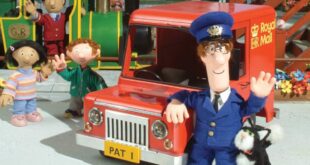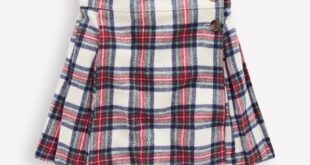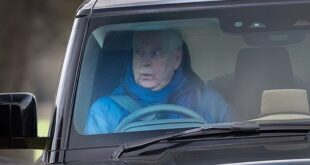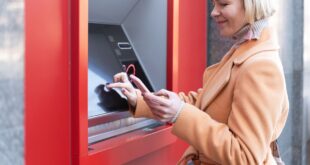All photos by Dan Kois
Think of your address numbers as your house’s earrings. Your house projects a certain aesthetic to your neighbors, intentionally or unintentionally, a set of visual cues that can be read along lines of class, taste, aspiration, and style. The numbers on your house do more than identify your address for the postman; deployed properly, like the perfect pair of earrings, house numbers accentuate a harmonious visual message in concert with the design around them. Sometimes that message is one of individuality: My house, the numerals say, reflects my own personality, and is unlike any other house you might encounter. Sometimes it’s a message of conformity: My house fits in securely with all my neighbors’.
I recently walked every single street in my ZIP code in the Northern Virginia suburbs, cataloging the house numbers I saw along the way and mapping them, block by block for 1,114 blocks. This absolutely scientific survey yielded significant data about how styles of house numbers propagate across neighborhoods and significant observations about how house numbers “speak” to the passersby they address.
A Short History of House Numbers
The familiar American address system of odds and evens running concurrently down opposite sides of the street comes from Philadelphia, where Clement Biddle established it in 1790, according to Anton Tantner’s odd and delightful Address Numbers: Pictures of a Forgotten History. It was also in Philadelphia that the idea of assigning each block its own 100-number range was pioneered, in 1856. Both systems have spread across the world, though other systems still persist: the “horseshoe” method of numbers running sequentially down one side of the street and then back on the other side, so that No. 1 sits across from the highest number on the block; a “distance scheme” in which the number on a house refers to its distance from a given point. There are still plenty of places in the world where addresses are not used. In most towns in Costa Rica, for example, locations are given narratively (“fifty meters west of the town hall,” etc.), since houses have no numbers and, “as in the song of U2,” writes the Costa Rica News, “the streets have no name.”
Where did the very idea of assigning numbers to homes come from? As Deirdre Mask writes in her fascinating new history of street addresses, The Address Book, house numbering is a product of the Enlightenment, and was undertaken originally not to aid citizens but to make it easier to tax and conscript them. “House numbers exist not to help you find your way,” Mask writes, “but rather to help the government find you.” That’s why in many European municipalities citizens snuck out at night to wash or chisel off the house numbers applied by officials during the day. In London, the creation of the Royal Mail inspired the mass renaming of streets and renumbering of houses in the 1860s and 1870s. Not everyone got the point; the man behind the Royal Mail, Rowland Hill, once saw a house with a brass 95 on the door, between Nos. 14 and 16. The owner of the home told him that 95 had been the address of her previous house, and since the brass plate was in perfectly good shape, she simply brought it with her to the new home.
That woman’s pride in her handsome brass plaque is echoed today in the way residents use their house numbers to express an aesthetic message. Sometimes this is officially designated; in some districts in Germany, “golden house numbers” are given to particularly elegant homes. (The seemingly innocent system has dark precedent in central Europe; in 1770, Holy Roman Empress Maria Theresa ordered all 1,100,399 of her domain’s homes numbered with Arabic numerals—except the houses of Jews, which were given Roman numerals.) In America, house numbers are typically a matter of personal choice. And my epic journey through one American ZIP code confirms that choice yields everything from vintage 1950s numbers, to hand-painted signs, to elegant modern numerals, to wacky displays so ornate as to verge on sculpture.
Methodology
Between March 10 and May 25, I walked every street in Arlington, Virginia’s 22207, a total distance of about 200 miles, according to my Fitbit. The ZIP code covers a lot of territory, 6.37 fairly densely populated square miles, from the Potomac River and the Washington border at the east to East Falls Church and the McLean border at the west. It includes some of Virginia’s richest and whitest neighborhoods, but also a number of apartment buildings and townhouses along Lee Highway and the historically Black middle-class neighborhood of Hall’s Hill.
During my walks, I collected data on the visible address numbers attached to the front of each home along my route, categorizing each home as either serif or sans serif.
Serif fonts included the traditional script fonts familiar on homes all over town, many of them dating back to the original construction of many North Arlington homes in the 1940s and 1950s. (My own house sports what appear to be the original metal house numbers, or at least it does until, inspired by this project, I replace them with something more fun.) They also included many newer address numbers, including those chosen to appear “old-timey” or to convey a “classic” feel.
Four serif houses.
Sans serif fonts were mostly sleek, newer address numbers, often installed an inch above the housing surface to deliver a modern drop-shadow effect. However, sans serif fonts also appeared on older houses, often those with ad hoc address solutions installed in the 1950s or 1960s—decals, mailbox labels, and the like.
Four sans serif houses. Bottom right: one of just five “euro 7’s” in the entire ZIP code.
If a home’s address appeared not on the house but on a mailbox or fence, I counted that. If the address appeared multiple places, I registered the address numbers that appeared to be most recently applied, or that seemed most to be making a specific statement. (For example, many houses bearing original, weatherbeaten 1940s numbers had also purchased and installed prominent new, fancy sans serif numbers; I counted such houses as sans serif.)
I tallied the number of sans serif and serif houses on each block and kept track by hand on an enormous, deranged map, made up of about 20 Google Maps screens printed out and taped together.
I’ve published all this data in an interactive Google Map, which I urge you in the strongest possible terms to check out. Future historians of suburban planning will weep with joy when they see my block-by-block color-coded data; come take a look!
In this Google Map, blocks with zero sans serif houses are blue. Blocks in which 1 to 24 percent of houses have sans serif addresses are green. Blocks in which 25 to 49 percent of houses have sans serif addresses are orange. The very few blocks in which sans serif houses equal or outnumber serif houses are red. You can also select the Neighborhoods layer to see how different neighborhoods stack up.
Top-Level Results
In the ZIP code 22207, serif addresses vastly outnumber sans serif addresses, 7,759 to 2,111. Many blocks feature no sans serif houses at all, or just one or two. But in isolated pockets—individual blocks or even orange and red “hot zones” spread across a couple of streets—sans serif numbers are beginning to break through.
Broken down by neighborhood, the data looks like this:
Glebewood 192 serif/28 sans serif, 87.2% serif
Old Glebe 353/62, 85.1%
Waverly Hills 471/100, 82.5%
Chain Bridge Forest 146/32, 82%
Cherrydale 848/187, 81.9%
High View Park/Hall’s Hill 392/89, 81.5%
Waycroft/Woodlawn 201/47, 81%
Yorktown 744/185, 80.1%
Country Club Hills/Gulf Branch 528/139, 79.1%
Maywood 132/36, 78.6%
Arlingwood 66/18, 78.6%
Dover Crystal/Riverwood 384/105, 78.5%
Rock Spring 652/189, 77.5%
Allencrest/Williamsburg 767/224, 77.4%
Old Dominion 362/107, 77.2%
Donaldson Run 635/189, 77.1%
Williamsburg Village 370/141, 72.4%
Rivercrest/Bellevue Forest 400/156, 71.9%
Woodmont 116/77, 60.1%
This data is, of course, evolving every day. Indeed, in the time since I collected data on my own block, another ranch house has been torn down, to be replaced, surely, by a hideous nine-bedroom superhouse sporting classy, subtle sans serif numbers.
Preliminary Conclusions
While serif houses represent the overwhelming majority of housing stock in 22207, certain blocks and neighborhoods have seen a boom in sans serif address numbers.
In western and southern 22207, new construction is beginning to overtake the postwar ranches, colonials, and split-levels built in the first wave of suburbanization. My observation suggests that if you’ve knocked down one of those small houses and built a large modern house, there’s roughly a 50 percent chance that your house features sans serif address numbers. Odds rise to nearly 100 percent if the house is white with a black roof.
Indeed, on sites where old houses have been torn down and new houses are being built, the crews sometimes nail the old house’s worn-out numbers to the permitting signboard, as if in warning to other old houses on the block that they could be next:
A warning!
If your block includes four or more examples of recent new construction, it’s very likely that most of those houses sport sans serif address numbers. And if, on that same block, newer residents have undertaken renovation or expansion projects on the extant housing stock, they’re quite likely—inspired, perhaps, by the sans serif numbers they see around them every day—to replace their own traditional house numbers with something that reads as a little more modern.
Take, for example, a dead-end street in 22207, 37th Street. It’s the rare street in my survey on which sans serif numbers nearly exceed serif numbers. (The count is 7 serif, 6 sans serif.) The block is dominated by two recent builds at the top of the hill: a huge white-and-black modern home and an interesting contemporary renovation of a rambler that added some striking terraces. Both homes, of course, feature sans serif numbers. Interestingly, the prominence of those two houses seems to have had an effect on the block. Every house within sight of the showcase contemporary that’s undergone renovation has replaced its old-fashioned numbers with sans serif numbers; even a few ranch houses with no other visible upgrades have gone sans serif. On this block, it seems, modern address numbers went viral.
The two houses dominating 37th Street.
Address numbers on nearby ranch houses.
The Woodmont neighborhood in eastern 22207 is notable for its relatively high rate of sans serif houses, more than 10 percentage points higher than any other neighborhood. (You’ll see it on the Google Map as a little hot spot of orange and red.) Woodmont is wealthy but, curiously, almost devoid of new construction—that is, houses built in the past 10 years. Because most of the houses in Woodmont appear to date from the 1960s and 1970s, it seems families haven’t had the chance to buy them and tear them down yet. Their contemporary stylings—set back deep in the woods with lovely terraces and lanais, many of them appear straight out of Northern California—match the sans serif fonts that many homeowners seem to have added to their homes from the very beginning.
In the very wealthy area of 22207 known as Country Club Hills, new home construction often steers away from the “bungalow on steroids” design common in other areas; there, new construction often appears strikingly postmodern, showcase houses with full walls of windows and dramatic geometric terraces. Those houses uniformly feature sans serif address numbers. But around them, the older houses of rich Arlingtonians stand firm, maintaining classic-style serif address numbers, and keeping the ratios of serif to sans serif high.
Some exorbitant McMansions featured no address numbers at all, only very pointed security-company signs. (The cars parked at those homes often sport diplomatic plates.) Many of the richest houses in Arlington—for example, the mansions overlooking the Potomac near Chain Bridge—were not visible from the street at all, and so the only address numbers ascertainable were on mailboxes or security gates at the foot of long, winding driveways.
North Arlington’s least welcoming house, with no visible address but plenty of security-company signs.
In Hall’s Hill, a historically Black neighborhood near Virginia Hospital Center, evidence of older rebuilds suggests gentrification has been pushing into the neighborhood for several decades now, as opposed to the more recent property turnover evident in other parts of 22207. That means a lot of “new” construction in Hall’s Hill was built in the 1990s or 2000s, before the current vogue for sans serif addresses. Many homes in Hall’s Hill still feature unique large serif numbers, seen below, which seem to have been installed on a lot of original housing stock in the area. Hall’s Hill also features 22207’s only historical marker that is about actual history, as opposed to just about some fancy old mansion where a senator took his mistresses on vacation in 1875.
A house and a historical marker in Hall’s Hill.
Another unique feature: In western 22207, several subdivisions seem to have featured, in their original construction, these sans serif address numbers, mounted on pieces of wood. Many of these numbers persist in the Allencrest/Williamsburg neighborhoods, contributing to a high sans serif count despite a relative lack of new construction compared with other parts of 22207. I find them quite elegant, in a summer-camp kind of way.
Further Observations on House Numbers (and Beyond)
America, you have a kerning problem:
It’s not uncommon to see specific house number styles echo between houses on the same block or in the same neighborhood. Sometimes it’s because a developer built two or more identical homes on the same block, right down to the font on the front. But often it seems as though residents see someone else’s new numbers and get inspired. “What a good idea!” you say, and the next day, your house looks just a little bit more like the Joneses’. It’s clear that both fun ideas (Frank Lloyd Wright–styled numbers) and silly ones (address numbers written out as words in a script font) spread virally from house to house within neighborhoods and on blocks.
Frank Lloyd Wright–ish.
These houses are next door to each other?!
Some houses demand that you acknowledge their address, by plastering it everywhere:
The county maintains its own set of address numbers, painted onto the curb in front of every residence in Arlington. These numbers are updated every so often, but older versions illustrate the varying fonts the county has utilized over the years, from a military-style stencil to a very mod, thin, midcentury sans serif:
In this era of stay-at-home orders and increased Amazon deliveries, many houses improvised hand-drawn solutions to the problem of not having house numbers at all:
Address numbers can be gloriously idiosyncratic, as homeowners search for ways to express their individuality, style, class, and/or taste:
In my roaming, I discovered North Arlington’s wildest house, North Arlington’s funkiest address numbers, and North Arlington’s coolest mailbox:
The two and a half months I spent walking through 22207 was, of course, about more than simply cataloging address numbers. I wanted to get a sense of what my community was like, to visit places I’d never seen before. I saw foxes unhurriedly crossing the street, front yard bee hives, young deer scraping their antlers, and trees that took my breath away. I brought a basketball along on one walk and shot free throws on every cul-de-sac’s communal hoop. I read hundreds of yard signs congratulating graduates, excoriating the president, thanking essential workers. I was often recognized by the only people as interested in address numbers as me—the mail carriers, who depend on them in their daily work. (According to the USPS, mail carriers daily walk more than 117 delivery miles in 22207; I walked more because of all the to-and-fro from my house.) I nodded or smiled or waved or said “Hey” to countless families, joggers, gaggles of nondistancing tweens, Amazon delivery people, FedEx ladies, construction crews, and lawn guys.
In short, walking every street in my ZIP code helped me truly see, for the first time, the place where I live and the people who live here. The address numbers were but one aspect of this larger view. Let this quixotic task to which I devoted my spring stand as testament to my love of my little corner of the world—and to my fervent desire that soon, God willing, oh please, I’ll be able to go anywhere else again.



